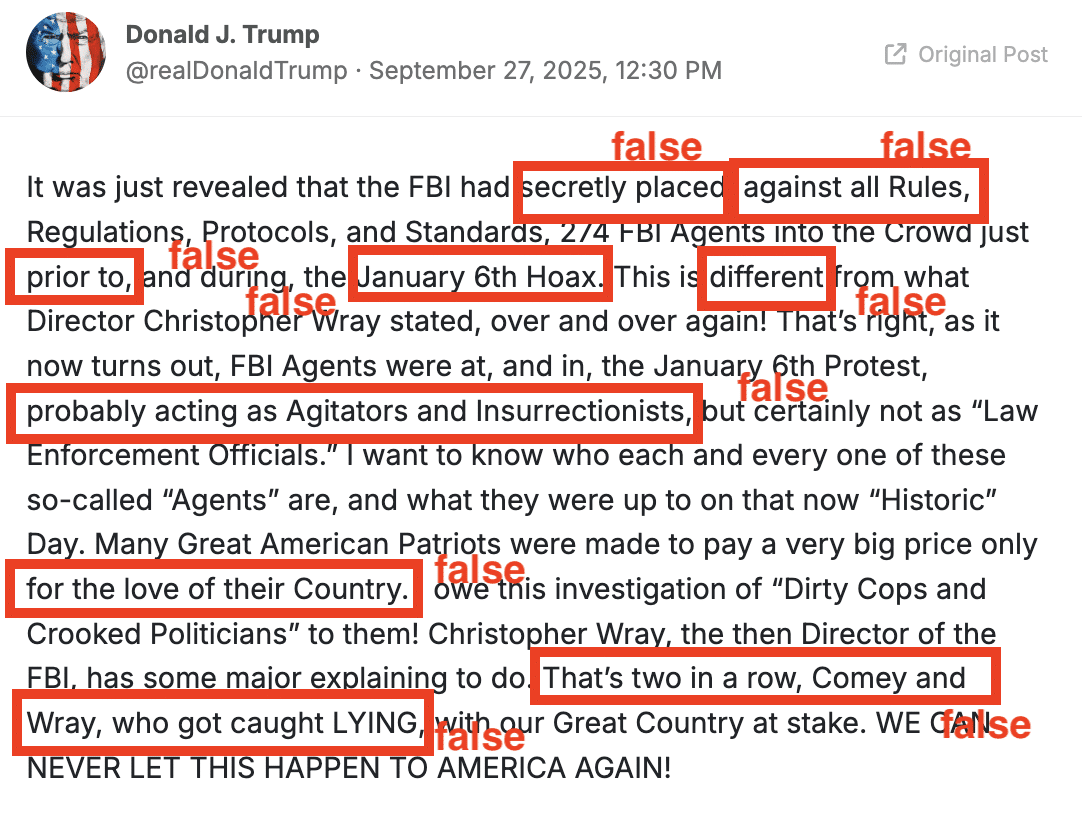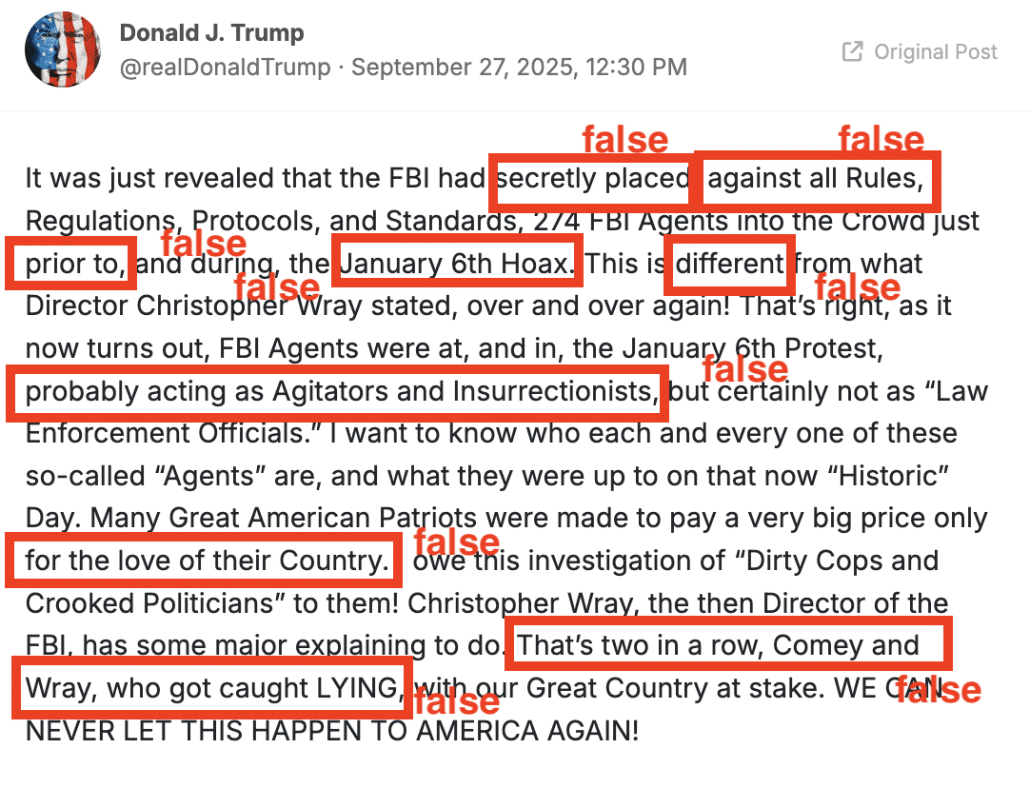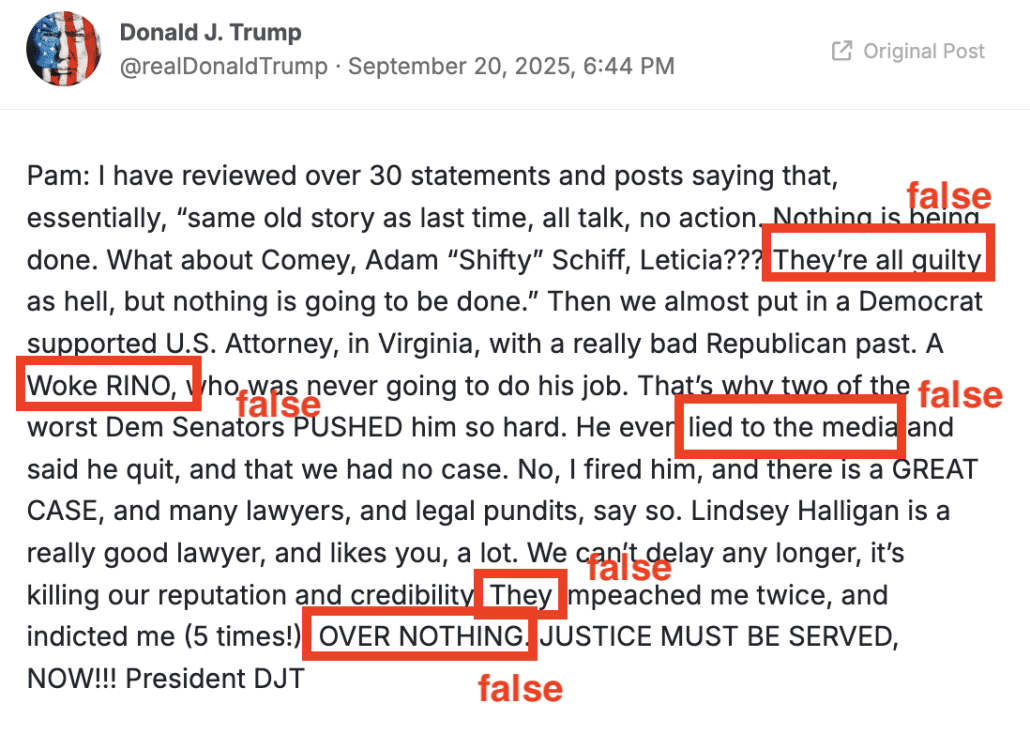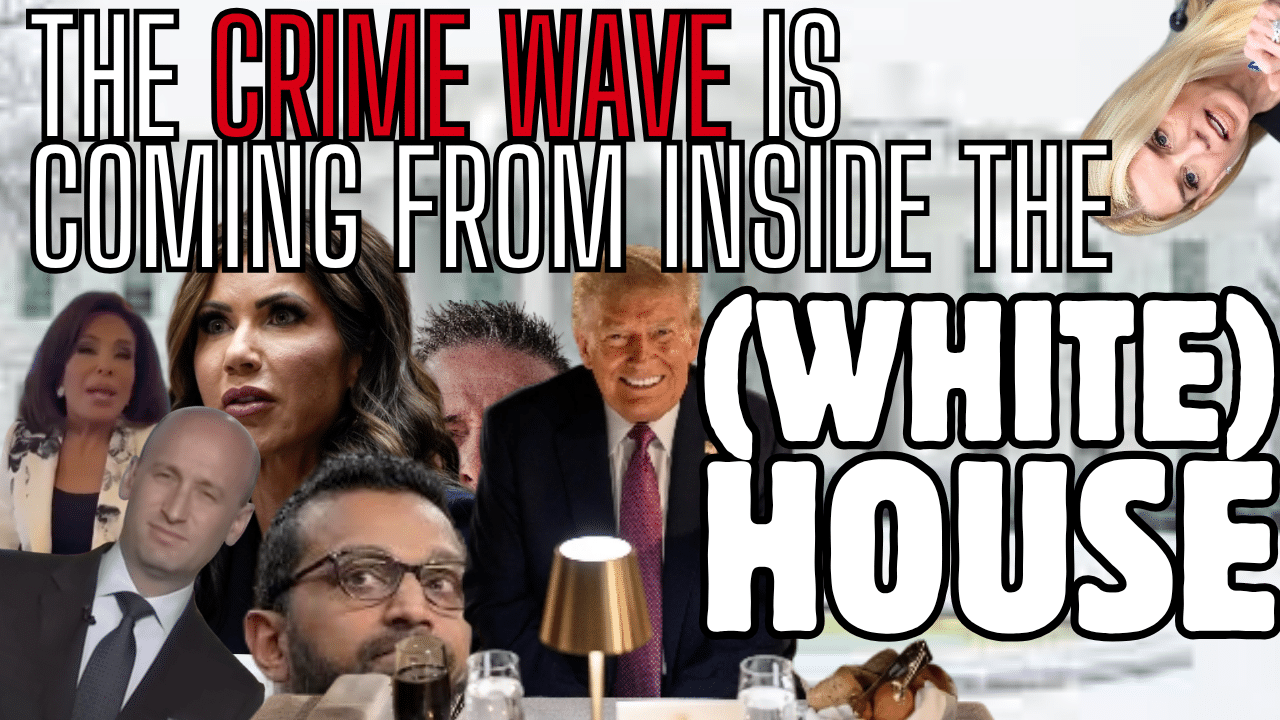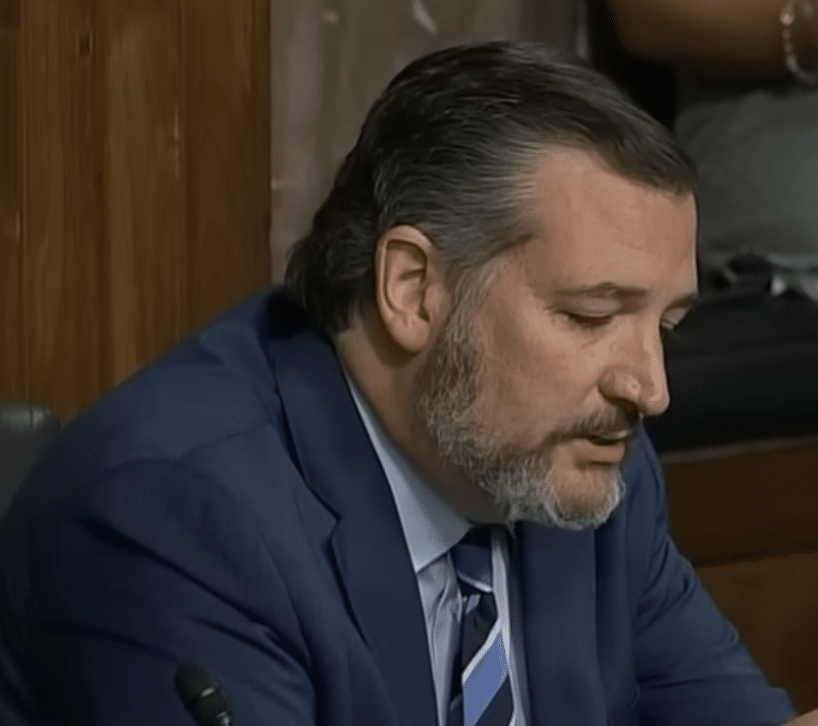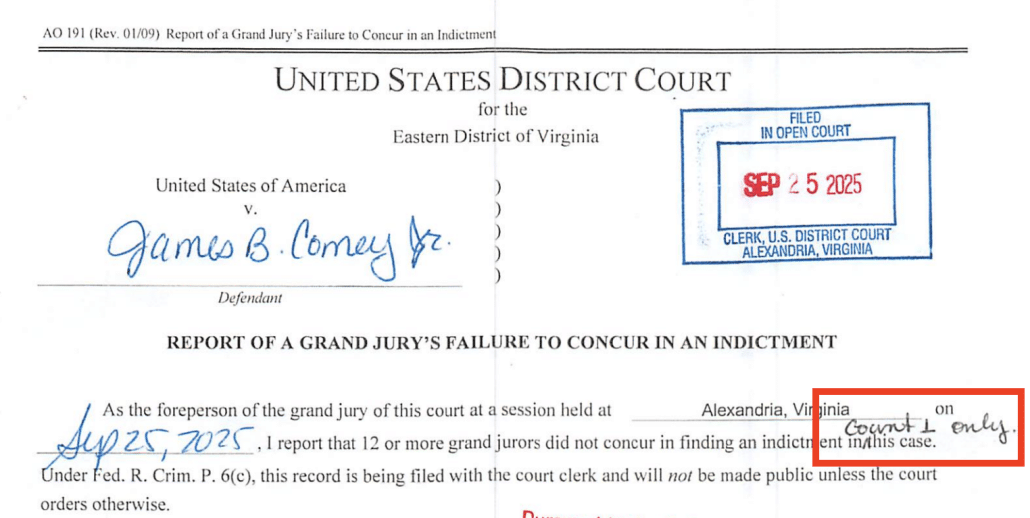Tyler Lemons Caught Jack Eckenrode Committing a Capstone Crime
Back in July, in the wake of Trump’s struggles to distract from his own Epstein cover-up and as if in response to Tulsi Gabbard’s wild rants about the Intelligence Community Assessment, the FBI Director posted this tweet, RTing an inflammatory tweet from a propagandist who has been central to Kash’s disinformation about the Russian investigation.
Buried in a back room at the FBI, Kash claimed, was what John Solomon called “the smoking gun evidence … [i]f it is authenticated.”
Days later, Kash referenced these files again, explicitly tying his campaign to supplant the Steele dossier for the actual Russian investigation with his role, as FBI Director, now focusing on “uncovered burn bags/room filled with hidden Russia Gate files, including the Durham annex.”
It took just a matter of days for me and Charlie Savage to figure out that four years earlier, John Durham had not just not authenticated John Solomon’s “smoking gun,” but he had in fact concluded that the very email Solomon called a smoking gun was instead, “a composite of several emails.”
That is — a fabrication.
After the release of the Durham annex revealed that Kash — and John Durham and John Durham’s lead investigator Jack Eckenrode, along with John Ratcliffe — had been chasing Russian disinformation, Kash got even more desperate, clinging to Sean Davis propaganda in an attempt to rebut a plain reading of the Durham annex.
The FBI Director just endorsed the ignorant ravings of a long-discredited propagandist, Sean Davis, attempting to debunk the NYT’s factual reporting that the letters on which the entire conspiracy the frothy right has been chasing for years “were probably manufactured.”
Kash needs Davis to be right, because if he’s not, it exposes Kash as someone too stupid to understand he has been chasing Russian disinformation for years. Kash needs Davis to be right, because Kash just declassified this annex thinking it would help his boss distract from the Epstein scandal that him himself stoked, when in fact it shows that Russian spies have been laughing their ass off at everyone involved for nine years (which I’ll come back to).
The truth is, Kash has been chasing documents as self-evidently problematic as the Steele dossier all that time.
He has proven an easy mark.
That’s what we saw in real time. We also saw in the classified annex both that Durham, along with his chief investigator, Jack Eckenrode, tried to hide the evidence that they had been chasing Russian disinformation for years — indeed, continued to chase Russian disinformation for two years after obtaining confirmation they were doing that. Then Tulsi Gabbard and Chuck Grassley tried to hide that Durham had tried to hide that.
It became clear that John Durham and his lead investigator Jack Eckenrode had committed the very crime that Durham claimed he was investigating when he chased Russian disinformation for four years, which he described this way:
(i) knew the Clinton campaign intended to falsely accuse its opponent with specific information or allegations, (ii) intentionally disregarded a particular civil right of a particular person (such as the right to be free of unreasonable searches or seizures), and (iii) then intentionally aided that effort by taking investigative steps based on those allegations while knowing that they were false.
From the moment John Durham and his lead investigator Jack Eckenrode persisted in falsely accusing Hillary of framing Donald Trump and used that false accusation to take investigative steps like obtaining warrants, they were (in their model) conspiring against rights under 18 USC 241.
18 USC 241 happens to be the crime that the frothers claim they are pursuing against Comey and everyone else right now.
About a month after Kash first rejoiced about the opportunity to commit the crime Durham had chased, we learned that Jack Eckenrode — shockingly!! — had been invited back to commit the same crime some more. NYT since updated on how, little more than a month after Todd Gilbert was confirmed as US Attorney in WDVA and asked to oversee this investigation, he left under pressure.
That’s background to these two exhibits that prosecutors included in the government’s response to Comey’s vindictive prosecution motion.
Start with the opening memo for an investigation into whether someone deliberately put a bunch of documents in burn bags but … didn’t burn them, the precipitating event that Kash boasted about on July 31. In fact, those burn bags were discovered in April, and they were discovered in FBI Headquarters, not WDVA, where Kash and Bondi stashed the investigation. And the likely explanation for the documents is that senior FBI people were clearing out their offices to make way for … Kash Patel.
On or about April 15, 2025, the Director’s Advisory Team was informed of the unusual discovery of highly classified and sensitive documents found inside five “burn bags” located in Room 9582, a certified Sensitive Compartmented Information Facility (SCIF) at the FBI Headquarters building in Washington, DC.
A cursory inventory of the 9582 SCIF revealed the existence of classified documents, including documents believed to be official records, inside “burn bags” which appeared to have been placed in the SCIF around the timeframe of the 2025 presidential inauguration – Friday, January 17, 2025 through Wednesday, January 22, 2025. A brief review of the contents of the “burn bags” revealed that some of the documents left behind may have come from a collection of records held by certain unidentified senior government officials at FBI Headquarters.
What really set Kash off, it seems clear, is that — seemingly amid a bunch of files relating to the Special Counsel investigations that happened during the Biden Administration — was the document at the heart of Durham’s criminal investigation building on Russian disinformation, a document potentially referring to the fabrications Russian spies made.
Among the records found were many related to the FBI’s Mar-a-Lago search, the January 06 capitol breach, the Crossfire Hurricane investigation, as well as a copy of the Classified Appendix to the John Durham Special Counsel investigation. Moreover, an additional record discovered as part of this management review process was an original referral by the Central Intelligence Agency (CIA) to former FBI Director James Comey, known as a Counterintelligence Operational Lead (CIOL). This CIOL, believed to have been missing for several years, was dated September 07, 2016 and contained certain intelligence related to the 2016 U.S. presidential election campaign. The CIOL was found in a storage closet adjacent to the Director’s office and was subsequently transported to the 9582 SCIF. Former Director Comey previously testified before the Senate Judiciary Committee that he was unfamiliar with this CIOL as well as its related intelligence. [my emphasis]
Now, there are already several flashing lights here. 🚨🚨🚨 [Sorry Rayne!]
You cannot have Jack Eckenrode anywhere near the criminal investigation into a document he chased for years. He has more incentive to hide the Durham annex showing that he committed the very crime he was investigating than Comey (or anyone close to him) has to hide the CIOL. In any case, this still seems to fall well short of proof that the FBI actually received it. This opening memo describes that the people who are supposed to catalog such things did not, and if they found it after the fact, it would raise real questions if Eckenrode planted it.
Worse still, the opening memo for this investigation misrepresents Comey’s testimony from the hearing.
Lindsey: Do you recall getting an inquiry from the CI, excuse me, the intelligence community in September, 2016, about a concern that the Clinton campaign was going to create a scandal regarding Trump and Russia? Mr. Comey: I do not.
Senator Graham: You don’t remember getting a investigatory lead from the intelligence community, hang on a second … Let me find my document here.
Speaker 3: There it is.
Senator Graham: September the Seventh, 2016, the US intelligence officials forwarded an investigative referral to FBI Director James Comey and Assistant Director of Counterintelligence Peter Strzok regarding US presidential candidate Hillary Clinton’s approval of a plan concerning US presidential candidate Donald Trump and Russian hackers hampering US elections as a means of distracting the public from her use of a private email server. You don’t remember getting that or being talk, that doesn’t …
Mr. Comey: That doesn’t ring any bells with me.
[snip]
Senator Graham: Did you have a duty to look at any allegations regarding Clinton in Russia?
Mr. Comey: I don’t know what you mean. Senator Graham: Well, you say you had a duty to look at allegations about the Trump campaign being involved with the Russians. You’ve got a letter now from Radcliffe saying that there was a, they intercepted information about an effort in July where Hillary Clinton approved an effort to link Trump to Russia or the mob. Did you have an investigation look and see if whether that was true?
Mr. Comey: I can’t answer that. I’ve read Mr. Radcliffe’s letter, which frankly I have trouble understanding.
That’s true, in part, because Graham misrepresented what the CIOL was. As it explains, the memo only served to provide the kinds of information that the CIA was finding in SVR documents obtained from the Dutch. It was not a request for the FBI to conduct an investigation, but right wingers have treated it as such for years.
The redaction in the pertinent paragraph, which seems to be a reference to Guccifer 2.0, likely obscures the entire meaning of the paragraph, to say nothing of the redaction of the other paragraphs. More importantly, there was no discussion at the hearing of what Comey would have understood this to belong to: the larger set of SVR documents that the FBI had deemed objectively false much earlier in the year.
In other words, that reference in the opening document shows that this entire investigation was predicated on a false claim about Comey — it represents Eckenrode’s false belief about Comey, not the actual transcript (remember, Loaner AUSA Tyler Lemons hid this transcript as an exhibit in his response to Comey’s selective prosecution bid).
And the Jim Comey notes that Lemons insinuates undercut Comey’s claims about receiving the CIOL on September 7, 2016 only serve to underscore this point.
The discovery of the handwritten notes is relevant considering the defendant’s prior testimony on September 30, 2020. Of note, during that hearing, the defendant was questioned by Senator Graham of South Carolina and Senator Hawley of Missouri. See Gov. Ex. 14. The questions focused on whether the defendant remembered “being taught” of “U.S. presidential candidate Hillary Clinton’s approval of a plan concerning U.S. presidential candidate Donald Trump and Russian hackers hampering U.S. elections as a means of distracting the public from her use of a private email server.” See id. The defendant responded by stating that “it doesn’t ring any bells with me” and “I don’t know what that refers to” and “I don’t remember receiving anything that is described in that letter.” See id. at 1 and 5. Despite this testimony, the defendant’s handwritten notes dated September 26, 2016, read: “HRC plan to tie Trump.” See Gov. Ex. 13 (Defendant’s handwritten notes).
These notes are more consistent with the SVR files being disinformation, rather than the truth right wingers have adopted it as.
More importantly, there’s no reason for Comey to be briefed (possibly by John Brennan) on a topic on September 26 if he received information about it 19 days earlier.
That is, these notes appear to be Comey writing down the reference, understanding it to be part of an attack on Hillary, weeks after Republicans want to catch him receiving a memo.
The part about prosecutors and FBI agents reading these notes in the least sensical way possible is not a crime.
What is a crime, though, is using Russian disinformation you know to be Russian disinformation (and Comey appears to have believed was disinformation) to obtain a criminal indictment.
And it appears that Lindsey Halligan tried to do that — but got no-billed.
Further, according to the transcript from the hearing on Wednesday, Comey’s team read Tyler Lemons’ response to Comey’s vindictive prosecution claim the same way I did:
As for the 18 USC 1505 charge, prosecutors will need to prove that Comey told lies that were intentional that impeded that investigation. Because of the scope of the hearing (and therefore the investigation), they can’t argue the two Hillary stories are material. Comey was aware of the scope of the hearing and Hillary wasn’t part of it.
There’s no way they can argue that Comey should have admitted asking Richman to serve as an anonymous source for the May 2017 story impeded the Senate investigation, because he had admitted that years earlier!!
That leaves just the Lindsey Graham question, which was specifically about whether Comey remembered the CIA referral, dated September 7, that Kash Patel had recently released in redacted — and therefore likely hopelessly misleading — form. As the transcript Lemons buries in an exhibit makes clear, the question — the one the grand jury no-billed — was not whether Comey was briefed; it was whether he recalls getting the document itself (Lindsey misstates what this document even was).
On Wednesday, Pat Fitzgerald expressed serious concern that “the government is expanding its case, we believe, to include the conduct that was no true billed in Count One as part of its proof of Count Two.”
And on top of that, Your Honor, I think there’s another motion coming from us, in light of some disclosures that were made Monday, where we think that the government is expanding its case, we believe, to include the conduct that was no true billed in Count One as part of its proof of Count Two, which raises serious issues for us. So we’ll do everything we can, but to do all that while getting Mr. Comey access to materials…
As I’ve said, this is the founding document of their conspiracy theories.
On Wednesday, Lemons didn’t raise an objection when Magistrate Judge William Fitzpatrick first said he was going to order DOJ to turn over grand jury transcripts, suggesting Lemons may have no fear Miles Starr presented privileged information to the jury.
By the end of day yesterday, he did have an objection. Michael Nachmanoff has bumped the whole grand jury question back to Fitzpatrick, so I expect Patrick Fitz (sorry, bad joke!) will get to test this theory shortly.
But that — relying on a no-billed charge for the obstruction charge — is not the only problem with chasing the Clinton Plan disinformation that John Durham debunked.
The far graver problem is it means Miles Starr is a witness to, if not a co-conspirator to, Jack Eckenrode (and FBI Director Kash Patel) committing a crime, precisely the crime they’re chasing.
Four years ago, Jack Eckenrode concluded this stuff was a Russian fabrication, the very thing they claim about the Steele dossier.
And then, Jack Eckenrode got an indictment for it anyway.






